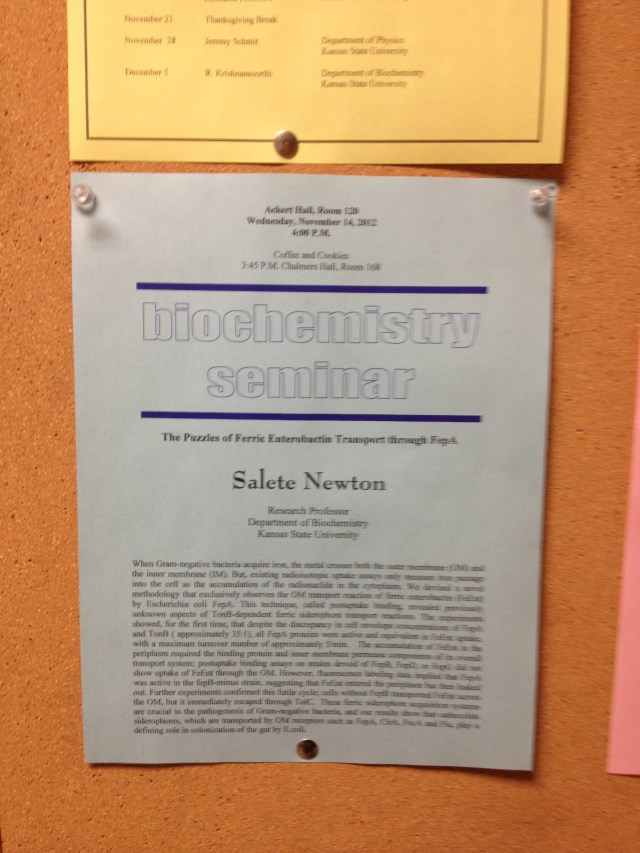Cookies and coffee will be available at 3:45pm…
THE PUZZLES OF FERRIC ENTEROBACTIN TRANSPORT THROUGH FepA
When Gram-negative bacteria acquire iron, the metal crosses both the outer membrane (OM) and the inner membrane (IM). But, existing radioisotopic uptake assays only measure iron passage into the cell as the accumulation of the radionuclide in the cytoplasm. We devised a novel methodology that exclusively observes the OM transport reaction of ferric enterobactin (FeEnt) by Escherichia coli FepA. This technique, called postuptake binding, revealed previously unknown aspects of TonB-dependent ferric siderophore transport reactions. The experiments showed, for the first time, that despite the discrepancy in cell envelope concentrations of FepA and TonB (approximately 35:1), all FepA proteins were active and equivalent in FeEnt uptake, with a maximum turnover number of approximately 5/min. The accumulation of FeEnt in the periplasm required the binding protein and inner membrane permease components of its overall transport system; postuptake binding assays on strains devoid of FepB, FepD, or FepG did not show uptake of FeEnt through the OM. However, fluorescence labeling data implied that FepA was active in the fepB-minus strain, suggesting that FeEnt entered the periplasm but then leaked out. Further experiments confirmed this futile cycle; cells without FepB transported FeEnt across the OM, but it immediately escaped through TolC. These ferric siderophore acquisition systems are crucial to the pathogenesis of Gram-negative bacteria, and our results show that cathecolate siderophores, which are transported by OM receptors such as FepA, CirA, FecA and Fiu, play a defining role in colonization of the gut by E.coli.
Anyone who falls asleep will hurt my feelings! 😉

